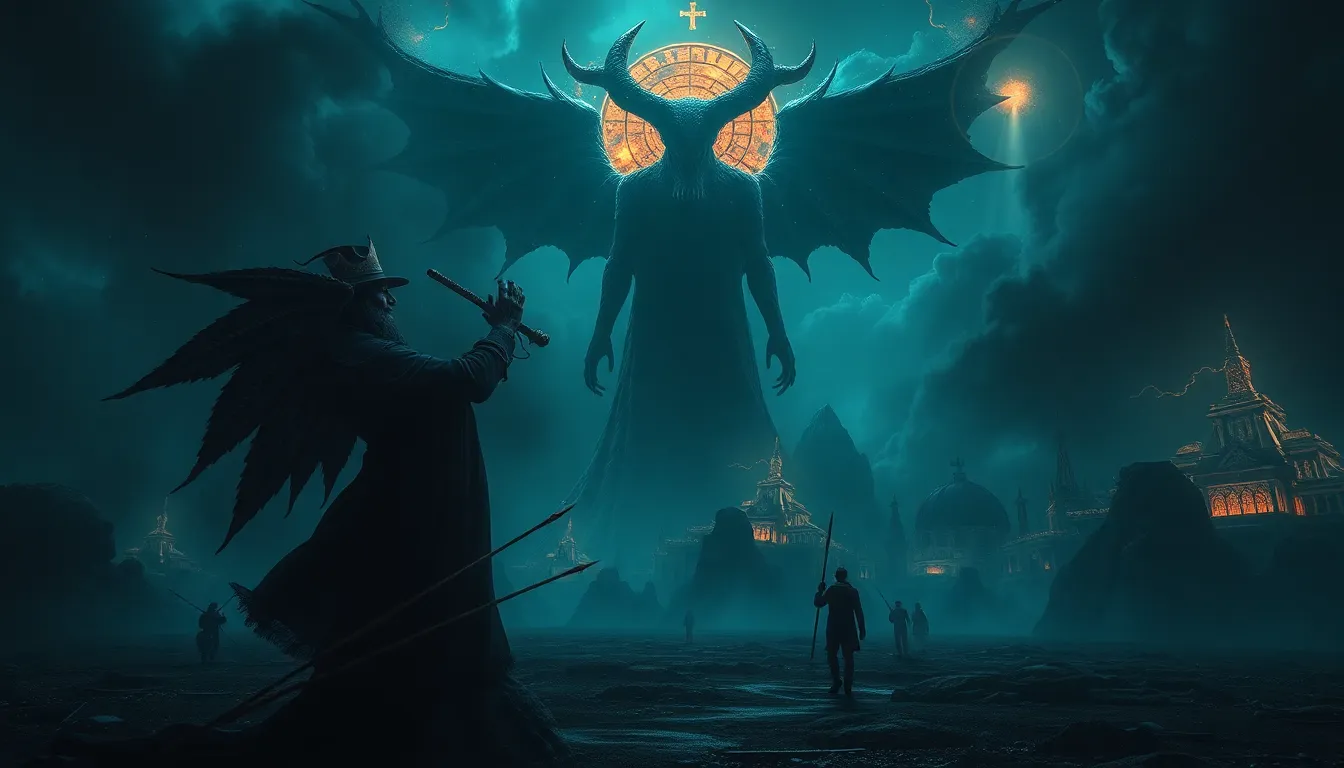Trickster Tales: The Intersection of Humor and Wisdom
I. Introduction
Trickster tales are a fascinating genre of storytelling that feature clever, mischievous characters known as tricksters. These figures often use their wits and humor to navigate challenges, outsmart adversaries, and impart lessons to their audiences. The significance of humor and wisdom in storytelling is profound; it not only entertains but also engages listeners in a deeper exploration of human experiences and societal norms.
The purpose of this article is to delve into the dual role of tricksters in folklore, examining how they embody both humor and wisdom, and how their narratives resonate across cultures and generations.
II. Historical Context of Trickster Tales
Trickster figures have their origins in various cultures around the world, often emerging in the oral traditions of indigenous peoples long before the advent of written language. These tales have evolved over time, adapting to the social and political landscapes of the societies that tell them.
Key examples of trickster figures include:
- Anansi: The spider from West African folklore, known for his cleverness and ability to outsmart larger foes.
- Coyote: A staple of Native American mythology, Coyote embodies both creation and destruction, often learning lessons the hard way.
- Loki: A complex character in Norse mythology, Loki is a shape-shifter who blurs the lines between hero and villain.
III. Characteristics of Trickster Figures
Tricksters share common traits that define their narratives. These characteristics include:
- Cunning: Tricksters are often incredibly clever, using their intelligence to navigate situations.
- Humor: Their stories are filled with wit and humor, making them entertaining and engaging.
- Unpredictability: Tricksters defy expectations, often leading to surprising twists in their narratives.
These characters function as both heroes and anti-heroes, challenging societal norms while also embodying moral ambiguity. Their actions often raise questions about ethics and justice, leaving audiences to ponder the lessons learned.
IV. Humor as a Tool for Social Commentary
Humor is a powerful tool in trickster tales, disarming audiences and engaging them in critical reflection. Through laughter, trickster stories critique societal norms and expose injustices. The humor often serves as a vehicle for deeper truths, revealing the absurdities of life and the contradictions in human behavior.
Examples of humor in trickster tales include:
- Trickster outsmarting a boastful opponent, highlighting the folly of arrogance.
- Situational irony, where the trickster’s cleverness leads to unexpected consequences for themselves or others.
V. Wisdom Embedded in Trickster Tales
While tricksters are often seen as mischievous, their tales impart significant lessons. The actions of these characters frequently highlight the balance of folly and wisdom. For instance, a trickster may initially appear foolish but ultimately teach important moral lessons through their antics.
Case studies of specific tales illustrate this wisdom, such as:
- The story of Anansi, who learns that wisdom often comes from collaboration rather than individual cunning.
- The tale of Coyote, who discovers the importance of humility after a series of failed schemes.
VI. The Psychological Appeal of Trickster Tales
The allure of chaos and unpredictability in trickster tales resonates with human psychology. These stories reflect our inner conflicts and desires, allowing us to explore the tension between order and disorder. Laughter, inherent in these narratives, serves as a coping mechanism, helping individuals navigate the complexities of life.
VII. Trickster Tales in Modern Storytelling
In contemporary literature and media, trickster characters continue to thrive, adapting to modern contexts. The relevance of trickster tales is particularly pronounced in today’s social and political climate, as they provide commentary on current events and societal issues.
Examples of modern stories that draw on traditional trickster motifs include:
- Movies featuring a charismatic anti-hero who outsmarts authority.
- Books that reinterpret classic trickster figures, placing them in contemporary settings.
VIII. The Role of Trickster Tales in Education
Trickster tales can be powerful educational tools, teaching critical thinking and problem-solving skills. The humor and wisdom embedded in these narratives can inspire lessons that resonate with students.
Activities and lessons inspired by trickster narratives might include:
- Group discussions on the moral implications of trickster actions.
- Creative writing prompts where students create their own trickster tales.
IX. Cross-Cultural Comparisons of Trickster Tales
Cross-cultural analysis of trickster tales reveals both similarities and differences across traditions. Universal themes of humor and wisdom emerge, demonstrating the shared human experience. Insights gained from these comparisons highlight the diverse ways cultures interpret the role of the trickster.
X. Conclusion
In conclusion, trickster tales hold a special place in folklore and storytelling, serving as a rich intersection of humor and wisdom. They entertain while provoking thought, challenging societal norms, and imparting valuable lessons. The enduring appeal of tricksters across cultures underscores their significance in both historical and contemporary narratives, making them essential figures in understanding human nature and social dynamics.




